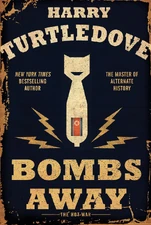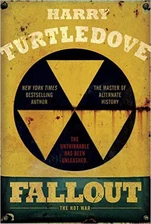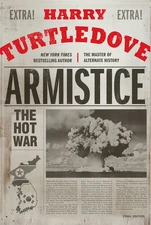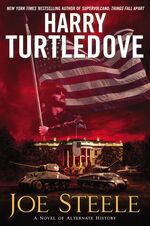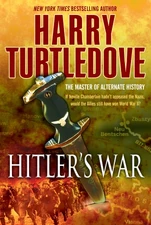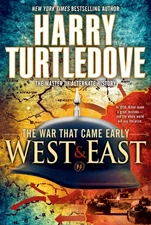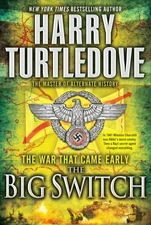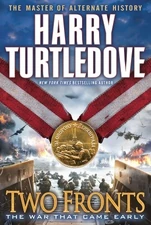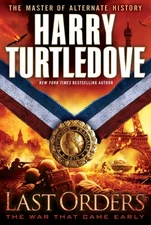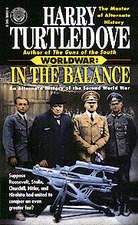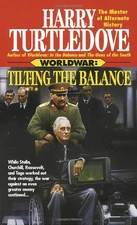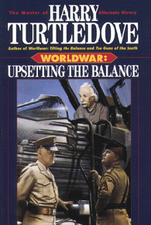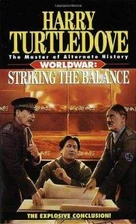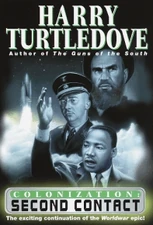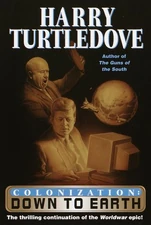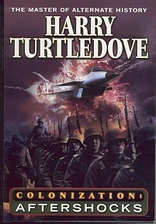| ||||||||||||||||||||||||||||||||||||||||||||||||||||||||||||||||
Hirohito, known posthumously as Emperor Showa (29 April 1901 - 7 January 1989) was the 124th Emperor of Japan according to the traditional order of succession, beginning his reign in 1926. Under his reign, Japan become a member of the Axis, and fought the Second Sino-Japanese War and World War II. Although he symbolized Japanese evils in U.S. propaganda during the War, the Emperor cooperated with the reorganization of the Japanese state during the Allied occupation of Japan (which had surrendered unconditionally in 1945), and was found not guilty of war crimes. Hirohito was the only head of state of a major Axis partner not to be killed or overthrown in the immediate post-war period. He lived to see Japan become a highly urbanized democracy and one of the industrial and technological powerhouses of the world.
From 1945 until his death, the official story regarding Hirohito's role in the war was that he was a powerless figurehead who was not responsible for his councils' brutal actions. More recent analysis suggests that this innocent image was a morale-boosting lie created for convenience in reconciling old foes. Extant wartime documents have given the lie to any claims of imperial plausible deniability, therefore it is once again believed that Hirohito was indeed a prime mover behind Japan's worst atrocities.
Hirohito in The Hot War
Although Hirohito remained the Emperor of Japan after World War II and into World War III, in fact the United States called the shots in Japan.[1]
- This article or subsection is a stub because the work is part of a larger, as-of-yet incomplete series.
Hirohito in Worldwar
When the Race's Conquest Fleet invaded Earth in 1942, Hirohito led Japan into a co-belligerency with his Axis allies as well as former enemies including the United States and China. Hirohito was firm about his country's intent to fight the Race from the outset, and the country remained independent,[2]. although not without a price. The capital city, Tokyo, was destroyed by the Race when they learned of Japan's atomic bomb program.[3] Thus, at the Peace of Cairo, Japan was less a negotiator and more an observer,[4] and had their gains in China taken from them by the Race without recourse.
After the war, Hirohito formed much closer economic ties with the United States.[5] In 1965, Japan successfully tested its own explosive-metal bomb at Bikini Atoll, and demanded full diplomatic relations with the Race.[6]
Despite his title, the Race saw Hirohito as a "false front" for those who wielded true power in Japan.[7]
Hirohito in Days of Infamy
Hirohito gave his blessing to the the invasion of Hawaii as the opening stages of Japan's war with the United States.[8]
Hirohito in The War That Came Early
During the reign of Hirohito, Japan attacked China in 1937, and then the Soviet Union in April, 1939.[9] In summer, 1940, after Japan had successfully overrun Vladivostok, Japan and the USSR made peace.[10] However, tensions between Japan and the United States began ratcheting up throughout the remainder of 1940. On January 12 1941, Japan launched a war with the U.S.[11]
While Japan was initially able to gain substantial advantages in the Pacific throughout the war, by 1944, the fragile supply line they'd built began to collapse. With the war in Europe ending in mid-1944, the USSR turned its attention east again, and began closer cooperation with the U.S. in its war against Japan.
Hirohito in Joe Steele
Hirohito (1901-1946) was the Emperor of Japan during World War II. While he reigned over his country's gains against its enemies, as the war progressed, Japan found itself in dire straits. At the end of 1945, after the United States invaded Japan in the south, and the Soviet Union invaded from the north, Hirohito and his generals nonetheless remained publicly defiant to the bitter end, leading to Operation: Coronet. [12]
With Coronet underway, Hirohito attempted to flee Tokyo in a black car escorted by four tanks. On the road to Kyoto, the convoy was attacked by American Hellcats. Three tanks were destroyed immediately in the attack. The car was also disabled, and Hirohito himself was killed by two rounds from the Hellcats'.50 caliber machine guns. While the crew of the fourth tank survived, and attempted to rescue Hirohito, they were killed by U.S. troops who'd just happened to be present. One of the soldiers, Mike Sullivan, identified Hirohito.[13]
Japan surrendered shortly after, and was divided into two states by the U.S. and the U.S.S.R. Hirohito's twelve-year old son, Akihito, became the emperor of the Constitutional Monarchy of Japan, the puppet state established by the U.S.[14]
Literary Comment
In the short story, Hirohito (1901-1945) is killed when his train is struck by an incendiary bomb during the American invasion of Japan in roughly December 1945. While the U.S. still creates the state of South Japan, the story does not describe the type of government South Japan is.
Hirohito in Southern Victory
During the reign of Hirohito, Japan and the United States fought two wars, the Pacific War[15] and the Second Great War,[16] with neither achieving a true victory over the other.
References
- ↑ The Hot War, pg. 138, HC.
- ↑ In the Balance, pg. 224.
- ↑ Upsetting the Balance, pg. 105-106.
- ↑ Striking the Balance, pg. 397.
- ↑ Second Contact, pg. 117.
- ↑ Down to Earth, pgs. 518-521.
- ↑ In the Balance, pg. 178.
- ↑ See the Days of Infamy series, generally.
- ↑ See Hitler's War through The Big Switch, generally.
- ↑ The Big Switch, pg. 296.
- ↑ Ibid., pg. 396.
- ↑ Joe Steele, pg. 315.
- ↑ Ibid., pgs. 321-323.
- ↑ Ibid., pg. 325.
- ↑ The Center Cannot Hold, pg. 378, HC.
- ↑ The Grapple, pg. 324, pb.
| Royal offices (OTL) | ||
|---|---|---|
| Preceded by Taisho |
Emperor of Japan 1926-1989 |
Succeeded by Akihito |
| Royal offices (Joe Steele) | ||
| Preceded by Taisho |
Emperor of Japan 1926-1946 |
Succeeded by None; Akihito as Emperor of the Constitutional Monarchy of Japan |
| |||||||||||||||||||||
| |||||||||||||||||||
| ||||||||||||||||||||||
| |||||||||||||||||||||||||

